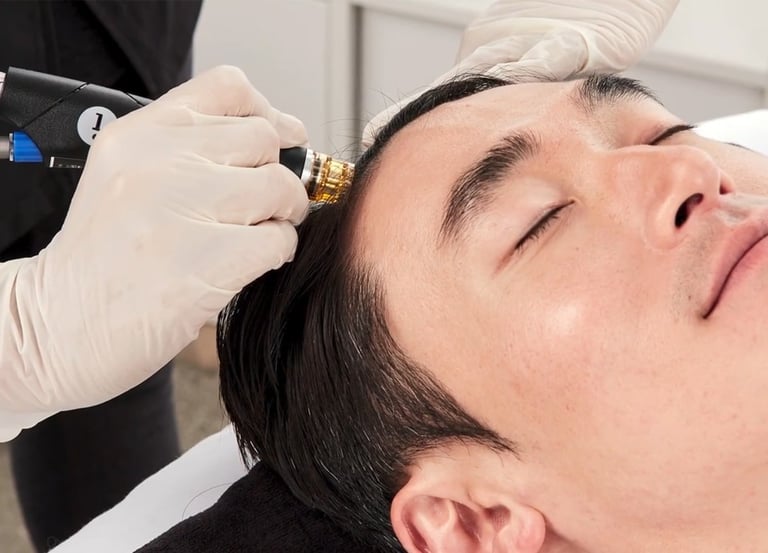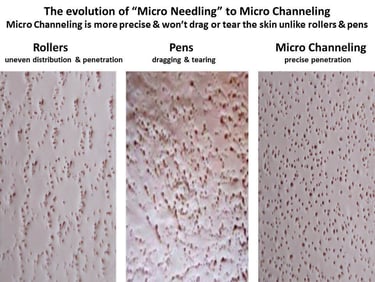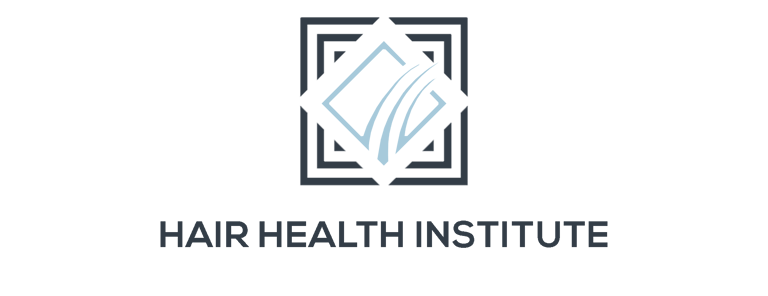Microchanneling Benefits
Discover how microchanneling therapies for the scalp can incite the production of stem cells & promote natural hair regrowth.
Experience improved hair growth & circulation!
Just $175 per treatment!
"Microneedling for hair growth is a particularly interesting option for people who haven’t had much success with FDA-approved hair loss treatments. It can be used on its own or as a combination treatment with platelet-rich plasma therapy, minoxidil, and other topical treatment options. Results are generally seen after a few months of treatment.
As recently as a decade ago, microneedling for hair regrowth was pretty new. With just a few scientific publications on the subject, it would have been hard to say whether or not it really worked. But in the last few years, a huge amount of microneedling studies have been published and a myriad of different microneedling devices have been developed. Most of the ones focused on treating androgenetic alopecia (commonly known as pattern hair loss) have shown positive results. (4,5)
However, it should be noted that the vast majority of these articles focus on microneedling alongside another treatment, like platelet-rich plasma therapy. Microneedling while applying minoxidil solution is another popular option. Microneedling on its own is the least well-studied hair loss treatment option – and is often only explored in order to compare it to combination treatment options.
But one such study, which explored using microneedling as a stand-alone treatment, as well as microneedling in combination with platelet-rich plasma therapy, reported that microneedling on its own worked just as well as the combination treatment. The main difference in results was that platelet-rich plasma therapy and microneedling combined produced more hair regrowth around the temples."
Source: Hairscience.org


Microchanneling on the scalp offers a promising non-invasive treatment option for individuals experiencing hair loss. By exciting the production of stem cells and natural growth factors, microchannelling can stimulate and awaken dormant hair follicles, while enhancing the absorption of topicals and improving scalp circulation. Leveraging scientific evidence supporting its efficacy, microchanneling represents a valuable addition to the armamentarium of treatments for hair restoration. As research continues to evolve in this field, microchanneling holds potential not only for hair loss management but also for improving overall scalp health and patient satisfaction.
According to research published in the Journal of Cutaneous and Aesthetic Surgery, microchanneling induces a cascade of growth factors and cytokines, which are responsible for initiating the hair follicle regeneration process. These growth factors include fibroblast growth factor (FGF), platelet-derived growth factor (PDGF), and vascular endothelial growth factor (VEGF), all of which play essential roles in hair follicle development and maintenance.
Improves Scalp Circulation
Studies have demonstrated that microchanneling improves blood circulation to the scalp. Improved blood flow means better delivery of oxygen and nutrients to hair follicles, which are essential for their growth and maintenance. Adequate circulation also helps remove toxins and waste products, promoting a healthier scalp environment conducive to hair growth.
Clinical Evidence and Studies
Clinical studies support the efficacy of microchanneling for hair loss. A study published in the Dermatologic Surgery journal found that microneedling was effective in promoting hair growth in patients with androgenetic alopecia, the most common form of hair loss in men and women. The researchers attributed this to the activation of stem cells and the release of growth factors induced by microneedling.
Another study in the International Journal of Trichology investigated the combination of microneedling with topical minoxidil and observed significant improvements in hair density and thickness compared to minoxidil alone. This combination therapy leverages the synergistic effects of microneedling-induced micro-injuries and enhanced drug delivery.
Safety and Side Effects
Microchanneling is generally considered safe when performed by a trained professional using sterile equipment. Common side effects include mild redness, swelling, and pinpoint bleeding immediately following the procedure, which typically resolve within a short period of time. The risk of infection is minimal with proper post-procedural care.
Microchanneling involves the use of fine needles to create controlled micro-injuries on the skin’s surface. When performed on the scalp, this process stimulates the body's natural wound healing response, which includes the production of collagen and elastin. These proteins are crucial for maintaining the structural integrity of the skin and promoting hair follicle health.
Microchanneling creates tiny channels in the scalp, which significantly enhances the absorption and efficacy of topical treatments applied during or immediately after the procedure. For instance, topical minoxidil, a commonly used medication for hair loss, can penetrate deeper into the scalp and directly target hair follicles, thereby maximizing its therapeutic effects.
To watch an introductory video on microneedling, stem cell serums, and how they work, CLICK HERE!
For a quick explanation of how microchanneling is superior to microneedling, CLICK HERE!
Microchanneling is considered a more advanced, less invasive form of microneedling for hair loss, offering a faster recovery with less downtime because it uses a stamping device to create uniform channels without the skin dragging seen with traditional rolling or microneedling devices. Both treatments stimulate collagen to improve scalp health and hair follicles, but microchanneling enhances this by creating clean channels for deeper, more effective penetration of growth factors and serums, making it a more effective approach for delivering topical treatments for hair growth.


Microchanneling, also known as microneedling, has gained significant attention in the field of dermatology and cosmetic treatments due to its potential benefits for hair loss. Specifically, when applied to the scalp, microchanneling offers several mechanisms that can contribute to hair growth and overall scalp health.
Experience regrowth, stimulate growth factors, and promote new hair growth with microchanneling therapies
Here at the Hair Health Institute, we are dedicated to bringing you the most advanced, non-surgical hair restoration techniques. We are passionate about helping our clients regain their confidence through healthy, revitalized, thicker, and fuller-looking hair.

Contact Us
For inquiries about the benefits of microchanneling for hair loss, contact us today!
© 2024. All rights reserved | Privacy Policy

